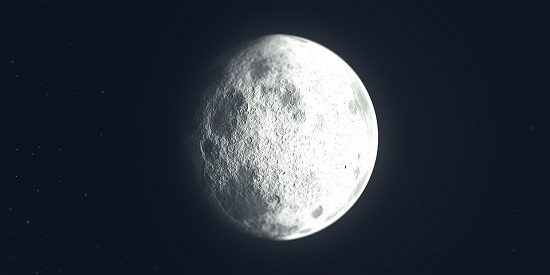There have been a few moments in life when I have experienced déjà vu. It happened on a cool Saturday night last month in Jerusalem. I looked up searching for the moon so that I could recite kiddush levana, the prayer which sanctifies the new moon. Suddenly, I felt transported back to my childhood in New Jersey. I remembered standing outside on a cold Saturday night seeing and blessing the very same moon.
In that moment of déjà vu, I reflected on how the moon cycles through its phases each month but is still the same all these years later. I am looking at the very same moon but something feels different. I am looking at the moon from the other side of the world, the Israeli side.
Recently, I was part of a Wexner discussion where the Israelis were asked to answer certain questions and the Americans were asked to answer others. I was left perplexed. Which questions pertained to me? I moved to Israel when I was almost 30 years old. I work for an American Jewish organization. Friends and family live in America. And yet, for the past 4 years I have been Israeli.
I remember looking at the very same moon from New York and thinking about my fellow Jews on the other side of the world blessing the new moon at the same moment. I remember feeling drawn to meet and get to know those mysterious Jews.
“I dance opposite you (the moon) and I cannot touch you” —Kiddush Levana. We look at the moon. We bless the new moon. But we cannot fully grasp the moon. It hovers overhead, is seen, but not understood. Part of the kiddush levana ceremony includes finding three people and greeting each one with the traditional greeting “shalom aleichem — peace be upon you.” Perhaps the message is that as we can see the moon but cannot fully grasp it, we can see, study, and read about our fellow Jews but we cannot fully grasp them.
If there is one lesson that I have learned after living in Israel, marrying a Hebrew speaking Israeli who never visited America before we met, working for years in a role that often asks me to explain the Israeli experience to American Jews and feeling torn between these two great modern Jewish communities — it is that knowing each other means understanding that there is always more to learn and understand about each other.
The General Assembly of the Jewish Federations of North America (the GA), concluding today in Tel Aviv, provided Israelis and Americans the opportunity for greater learning. In fact, the theme this year was: “Israel and the Diaspora: We Need to Talk.” As I look up at the Jerusalem half moon, I challenge us to take this moment to push forward to uncover the next phase of the moon’s mystery, to discover more about our fellow Jews across the ocean, and to realize that even once the moon is full this month, there will be more to discover next month. As we say in kiddush levana, “Siman tov umazal tov — May it be a good sign and a good omen for us and for all of Israel.” Amen.


Get To Know The Author
Prior to moving to Israel, Wexner Graduate Fellow Alum Rabbi Avi Narrow-Tilonsky (Class 20), helped create and directed a program introducing Jewish learning to 1100 parents of day school children across America, called the Kohelet Fellowships, through Yeshiva University. He also served as the interim Rabbi of Congregation Ahavat Achim in Fair Lawn, New Jersey. Avi received rabbinic ordination from Yeshiva University’s Rabbi Isaac Elchanan Theological Seminary in 2011. Simultaneously he completed a master’s degree in public administration at Baruch College. Besides his current work at the American Jewish Joint Distribution Committee in Israel, Avi enjoys reading, biking, storytelling, and traveling.

